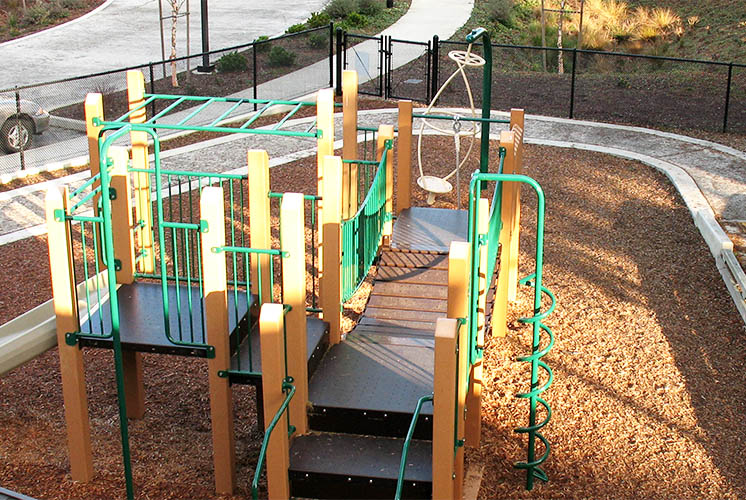Think about how barriers and pathways function in an indoor space; the same principles apply to outdoor spaces. Barriers and pathways define areas for different experiences and direct the flow of traffic between them.1 Decide what experiences to offer to infants and toddlers, how much space is needed or required for each experience, and how children will move from one space to another. Protective barriers between spaces can be created from a variety of materials, such as:
 Low rocks or round, smooth boulders
Low rocks or round, smooth boulders- Low walls or fences
- Poles
- Slatted wooden walkways (e.g., wooden platforms about 18 inches wide and 3 inches high, with space between the slats)
- Canvas- or vinyl-covered cushions
- Low shrubs
Mobile infants and toddlers need space to crawl, toddle, walk, and run. Leave some open space for these and other large-motor play experiences such as rolling, throwing, and kicking balls.
In home-based programs, go with families to their local outdoor spaces (e.g., public parks, playgrounds, fields) and evaluate the spaces together. Consider the following questions with families:
- Are there safe spaces to play with their children?
- Is the space accessible to children and adults with disabilities?
- What kinds of pathways and barriers protect the space? Interfere with the space?
- How might families be able to create a safe place for their children to play within these larger spaces?
1Lally et al., Guide to Setting Up Environments, 57; Post et al., Tender Care and Early Learning, 249.
Read more:
Resource Type: Article
National Centers: Early Childhood Development, Teaching and Learning
Last Updated: December 2, 2019
